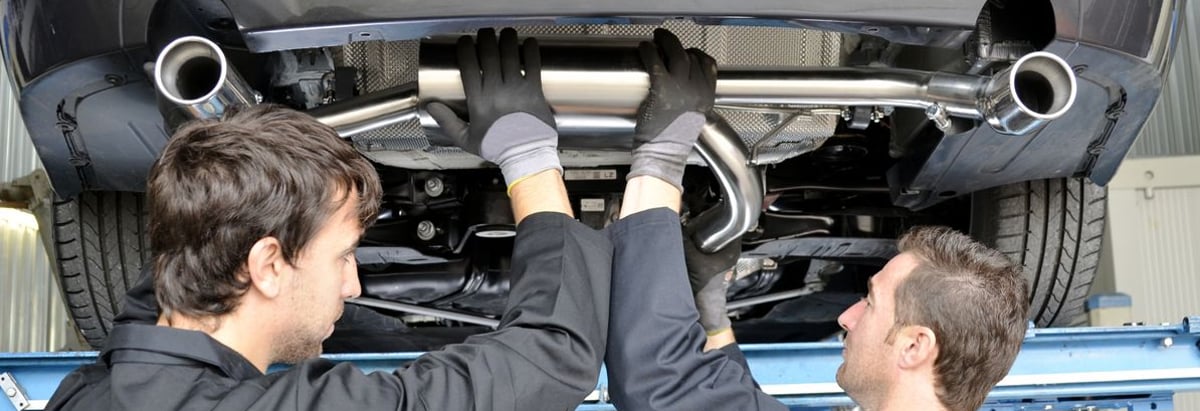Stock Analysis
- India
- /
- Auto Components
- /
- NSEI:CIEINDIA
CIE Automotive India (NSE:CIEINDIA) Seems To Use Debt Quite Sensibly

Legendary fund manager Li Lu (who Charlie Munger backed) once said, 'The biggest investment risk is not the volatility of prices, but whether you will suffer a permanent loss of capital.' So it might be obvious that you need to consider debt, when you think about how risky any given stock is, because too much debt can sink a company. We can see that CIE Automotive India Limited (NSE:CIEINDIA) does use debt in its business. But should shareholders be worried about its use of debt?
When Is Debt Dangerous?
Debt and other liabilities become risky for a business when it cannot easily fulfill those obligations, either with free cash flow or by raising capital at an attractive price. In the worst case scenario, a company can go bankrupt if it cannot pay its creditors. While that is not too common, we often do see indebted companies permanently diluting shareholders because lenders force them to raise capital at a distressed price. Having said that, the most common situation is where a company manages its debt reasonably well - and to its own advantage. When we think about a company's use of debt, we first look at cash and debt together.
See our latest analysis for CIE Automotive India
What Is CIE Automotive India's Net Debt?
You can click the graphic below for the historical numbers, but it shows that CIE Automotive India had ₹4.81b of debt in June 2024, down from ₹8.64b, one year before. However, its balance sheet shows it holds ₹6.56b in cash, so it actually has ₹1.75b net cash.
A Look At CIE Automotive India's Liabilities
We can see from the most recent balance sheet that CIE Automotive India had liabilities of ₹29.0b falling due within a year, and liabilities of ₹5.89b due beyond that. Offsetting this, it had ₹6.56b in cash and ₹14.9b in receivables that were due within 12 months. So its liabilities total ₹13.4b more than the combination of its cash and short-term receivables.
Since publicly traded CIE Automotive India shares are worth a total of ₹183.5b, it seems unlikely that this level of liabilities would be a major threat. Having said that, it's clear that we should continue to monitor its balance sheet, lest it change for the worse. While it does have liabilities worth noting, CIE Automotive India also has more cash than debt, so we're pretty confident it can manage its debt safely.
But the other side of the story is that CIE Automotive India saw its EBIT decline by 2.9% over the last year. That sort of decline, if sustained, will obviously make debt harder to handle. There's no doubt that we learn most about debt from the balance sheet. But it is future earnings, more than anything, that will determine CIE Automotive India's ability to maintain a healthy balance sheet going forward. So if you want to see what the professionals think, you might find this free report on analyst profit forecasts to be interesting.
Finally, a business needs free cash flow to pay off debt; accounting profits just don't cut it. CIE Automotive India may have net cash on the balance sheet, but it is still interesting to look at how well the business converts its earnings before interest and tax (EBIT) to free cash flow, because that will influence both its need for, and its capacity to manage debt. In the last three years, CIE Automotive India's free cash flow amounted to 35% of its EBIT, less than we'd expect. That weak cash conversion makes it more difficult to handle indebtedness.
Summing Up
We could understand if investors are concerned about CIE Automotive India's liabilities, but we can be reassured by the fact it has has net cash of ₹1.75b. So we are not troubled with CIE Automotive India's debt use. The balance sheet is clearly the area to focus on when you are analysing debt. However, not all investment risk resides within the balance sheet - far from it. For instance, we've identified 2 warning signs for CIE Automotive India that you should be aware of.
If you're interested in investing in businesses that can grow profits without the burden of debt, then check out this free list of growing businesses that have net cash on the balance sheet.
New: AI Stock Screener & Alerts
Our new AI Stock Screener scans the market every day to uncover opportunities.
• Dividend Powerhouses (3%+ Yield)
• Undervalued Small Caps with Insider Buying
• High growth Tech and AI Companies
Or build your own from over 50 metrics.
Have feedback on this article? Concerned about the content? Get in touch with us directly. Alternatively, email editorial-team (at) simplywallst.com.
This article by Simply Wall St is general in nature. We provide commentary based on historical data and analyst forecasts only using an unbiased methodology and our articles are not intended to be financial advice. It does not constitute a recommendation to buy or sell any stock, and does not take account of your objectives, or your financial situation. We aim to bring you long-term focused analysis driven by fundamental data. Note that our analysis may not factor in the latest price-sensitive company announcements or qualitative material. Simply Wall St has no position in any stocks mentioned.
About NSEI:CIEINDIA
CIE Automotive India
Produces and sells automotive components to original equipment manufacturers and other customers in India, Europe, and internationally.

